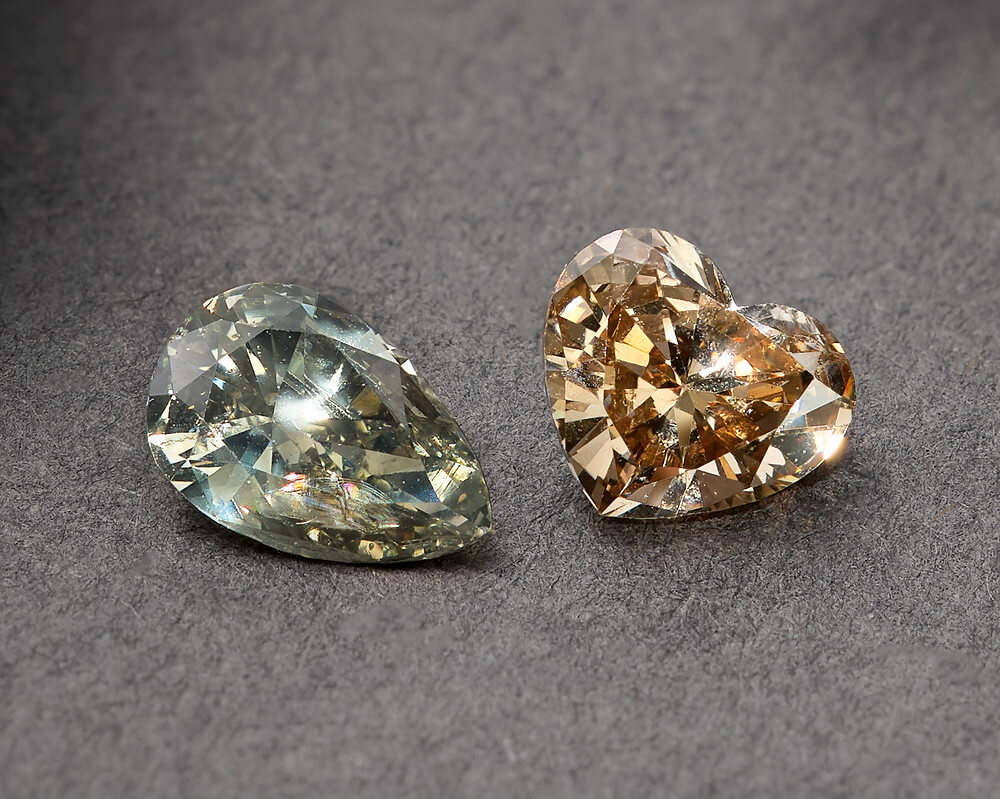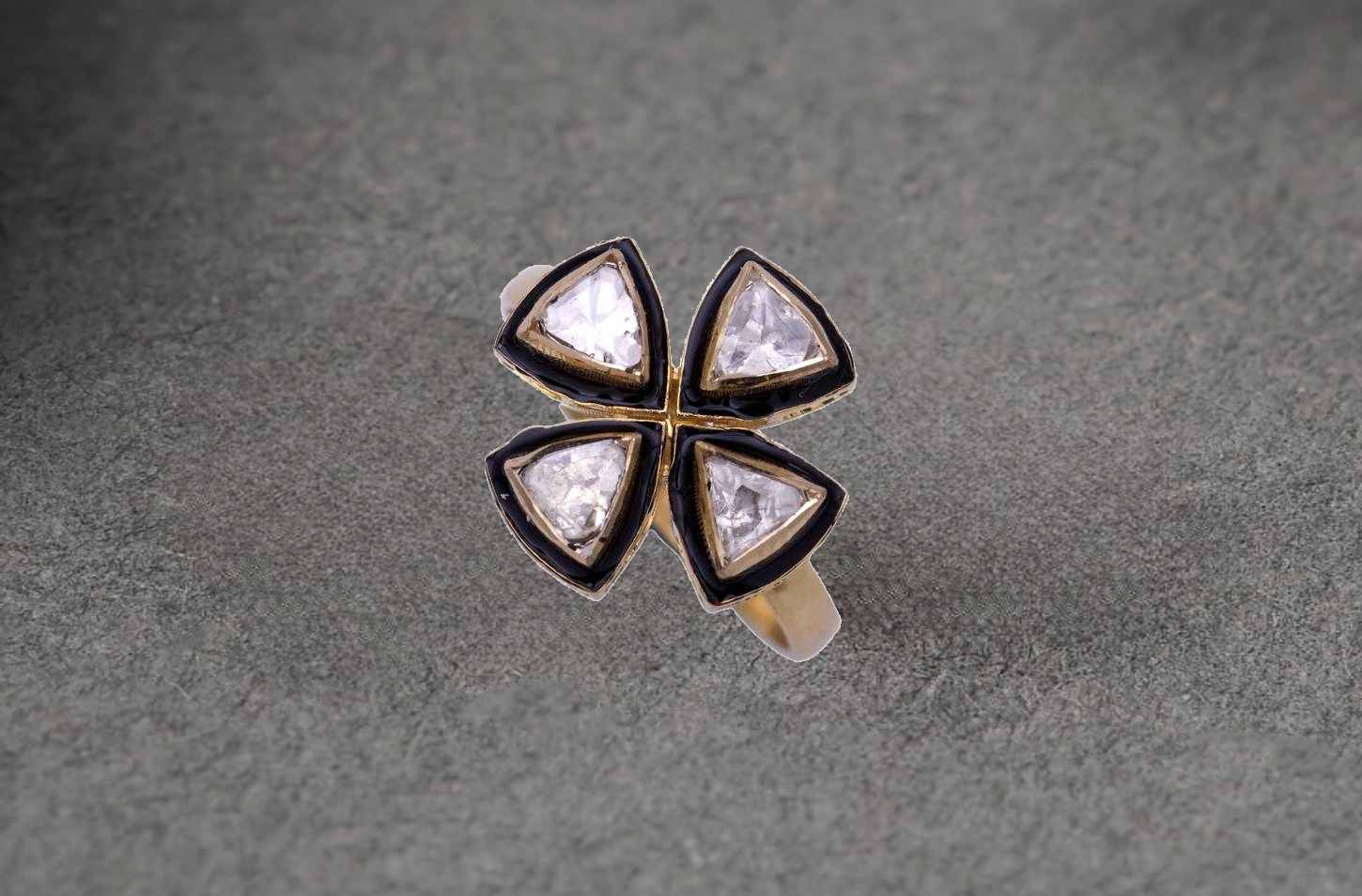The 4Cs of a diamond are cut, color, clarity, and carat weight.
They define a globally accepted quality of a diamond. Here is a closer look into the 4Cs.

Cut is a diamond’s symmetry, proportion, and polish. It does not refer to the shape of a diamond. It contributes to how much light a diamond reflects. A well-cut diamond is determined by its brilliance, distribution of light, and scintillation. Brilliance is the light that reflects off of a diamond. Once the light travels through a diamond, it disperses, and the light is separated into flashes of color. The scintillation of a diamond is when the colors flash and are viewable as the diamond is moved around.
A diamond’s natural color, or lack of, indicates a diamond’s grade. The less color, the higher the grade. A diamond’s color measures its rarity, but not quality. The International Color Scale, which was created by the Gemological Institute of America (GIA), is the standard scale used to measure a diamond’s color. This scale ranges from D through Z. D is colorless, usually an icy white, and the rarest and Z has the most color, which is usually a faint yellowish warm shade.
Diamond clarity is determined by how pure and clear a diamond is. When a diamond forms, slight flaws are developed on the surface and/or within it. Gemologists use 10x magnification to inspect a diamond for clarity. The lower the number of imperfections, the higher the clarity grade is. However, the imperfections are what makes a diamond unique, and most are not even visible to the human eye.
Carat (ct.) is the unit of measurement used to weigh diamonds. Although most think that the size of a diamond is what determines carat weight, it is the actual weight of a diamond that determines Carat weight.
Fancy colored diamonds display colors outside of the normal color range. The colors come from different trace elements that are present while a diamond is being formed. Diamonds can come in every color, but colors outside of yellow, brown, gray, or pink diamonds are extremely rare and can be more expensive than a white diamond with the same, or similar, carat weight and quality. The primary and secondary colors determine the tone of a diamond’s color.
The strength of that color is defined by its intensity. The classifications for fancy color diamonds are faint, very light, light, fancy light, fancy, fancy intense, and fancy vivid/fancy deep/fancy dark.


Uncut diamonds are called rough diamonds. They are mined naturally but they are unpolished and unshaped diamonds, so they vary in sizes. They shine and cost less compared to cut diamonds since they don’t go through high - priced cutting or polishing processes. These diamonds have uniqueness in each piece and no two uncut diamonds are alike.
Uncut diamonds have an eternal and ethereal appeal and jewelry from it enhances the natural beauty of rough diamonds to new heights.